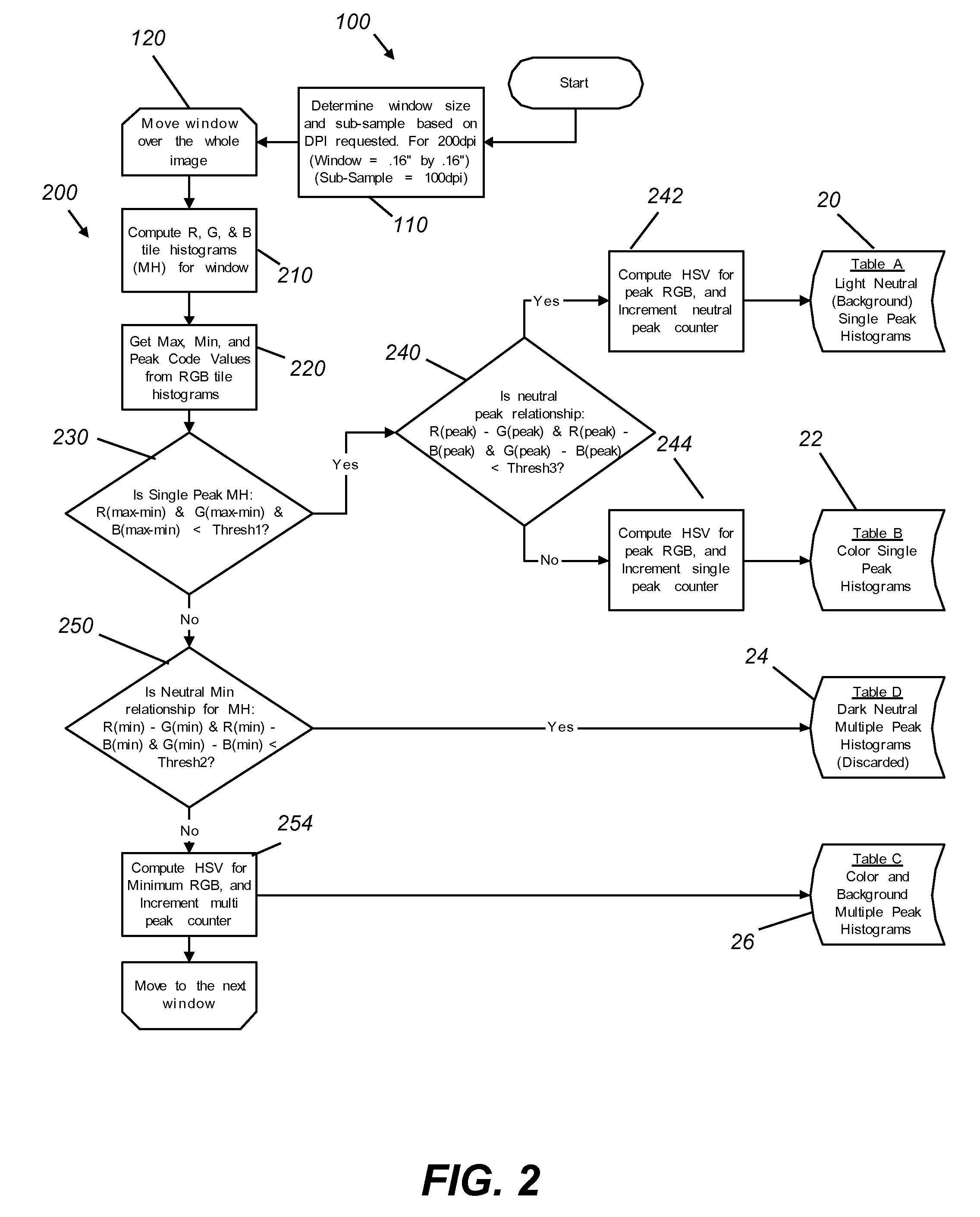Multi-color dropout for scanned document
a document and multi-color technology, applied in the field of image processing of scanned document images, can solve the problems of time-consuming and laborious training, limited training applications in color, and inability to change the color of the document,
- Summary
- Abstract
- Description
- Claims
- Application Information
AI Technical Summary
Benefits of technology
Problems solved by technology
Method used
Image
Examples
Embodiment Construction
[0038]The present description is directed in particular to elements forming part of, or cooperating more directly with, apparatus in accordance with the invention. It is to be understood that elements not specifically shown or described may take various forms well known to those skilled in the art.
[0039]The method of the present invention can remove all form color or colors from the scanned image data, leaving only neutral colors in the resultant grayscale image. That is, using the method of the present invention, one or more form colors can be shifted substantially toward the background color of the document, that is, to the page color, which is typically white or a very light neutral. This form color transformation is accomplished with minimal affect on the neutral data that contains the information content for which the document has been scanned. Unlike conventional solutions, no prior “training” of the scanner system or foreknowledge of the form or background color(s) is needed....
PUM
 Login to View More
Login to View More Abstract
Description
Claims
Application Information
 Login to View More
Login to View More - R&D
- Intellectual Property
- Life Sciences
- Materials
- Tech Scout
- Unparalleled Data Quality
- Higher Quality Content
- 60% Fewer Hallucinations
Browse by: Latest US Patents, China's latest patents, Technical Efficacy Thesaurus, Application Domain, Technology Topic, Popular Technical Reports.
© 2025 PatSnap. All rights reserved.Legal|Privacy policy|Modern Slavery Act Transparency Statement|Sitemap|About US| Contact US: help@patsnap.com



